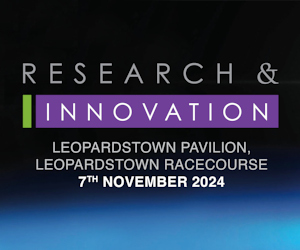Limerick student’s life-saving technology wins €2,500 James Dyson Award

A new feeding system designed by a Limerick student after witnessing his cousin struggle with feeding tubes after her birth has won the Irish leg of the 2014 James Dyson Award.
Mallow, Co Cork, native Darren Lehane’s potentially life-saving technology is called Nutria and aims to prevent the fatal risk of incorrect insertion of feeding tubes into patients’ stomachs.
Lehane (22) has just completed his bachelor’s degree in product design and technology at University of Limerick.
He is quite the inventor and has so far designed more than 21 prototypes, disassembled one microwave, three vacuum cleaners, two retractable dog leashes, four measuring tapes, and three scalpel blade holders, as well as retrofitting countless medical products to the various prototypes.
Nutria will progress to the international stage of the James Dyson Award and Lehane aims to commercialise the product.
Inspiration
Lehane was inspired to come up with the new invention after witnessing the hardship of his baby cousin, Danielle, who had to use a feeding tube shortly after her birth.
“It was horrible,” Lehane recalled. “She had an an awful time. The tube kept falling out and the excess tube was taped to her face, giving her a rash.
“Inserting an NG tube incorrectly has life-threatening consequences. A friend of mine studying medicine spoke of the stress this problem created in hospitals, but especially in the home setting, where an X-ray is not possible.”
Lehane began to investigate ways of improving the feeding system and joined an online forum where parents shared the problems they were experiencing with tube feeding.
Mallow, Co Cork, native Darren Lehane with his invention, Nutria
“It was here that I learned of the skin irritation caused by taping the tube to the patient’s cheek. The appearance of a child with a tube taped to their face, has in itself become a symbol of illness.
“So I set myself the goal to make the tube as discrete as possible. Many patients live normal sociable lives, and I wanted to design a solution that allowed them to do so with confidence.”
Unlike existing NG (nasogastric) tubes, Nutria rests just inside the nostril, almost invisible from the outside. Excess tube is cut flush with the valve and not exposed on the face.
To avoid misinserting the tube into the stomach, the system uses a Terahertz radiation microchip to show the exact position of the tube inside the body on a smartphone screen. Terahertz is a lot safer than an X-ray, due to a comparatively low frequency and long wavelength.
The system dramatically reduces the number of products and procedures involved in patient nutrition by combining three features to create a simplified, intuitive experience for the carer, as well as maximising patient comfort, and minimising cost.
The goal of eternal feeding
“I wanted to design a solution that allows patients to live normal sociable lives with confidence,” Lehane said.
“The goal of eternal feeding is to feed a patient who cannot ingest food normally. It took a lot of thinking to figure out that this project would consist of three separate parts, that would work together as a suite of products. I remembered how my uncle had to feed his daughter via NG tube for six months, and after listening to his experience, it was apparent that tube placement was only one of several issues that made life difficult for carers and patients alike.
“Nutria consists of a nostril valve to remove the need for taping of excess tubing, an audio jack accessory to safely monitor tube insertion on a smartphone, and a re-engineered pump with only two buttons; the on/off switch, and a button that winds in the feeding tube. All other functionality is moved to an app that’s operated on any smart device, via Bluetooth.”
The judges selected four runners-up to go through to the next stage of the competition, including Medi-pod, a self-cooling transportation pod for medical supplies via aerial drones; 20:20, a universal timepiece for people who are visually impaired; GO, a therapeutic horse-riding aid for users with autism, cerebral palsy, MS, Downs syndrome and muscular dystrophy; and Equaliser, an advanced, developed system to prevent unequal tensile loads on cranes.








There are no comments at the moment, do you want to add one?
Write a comment